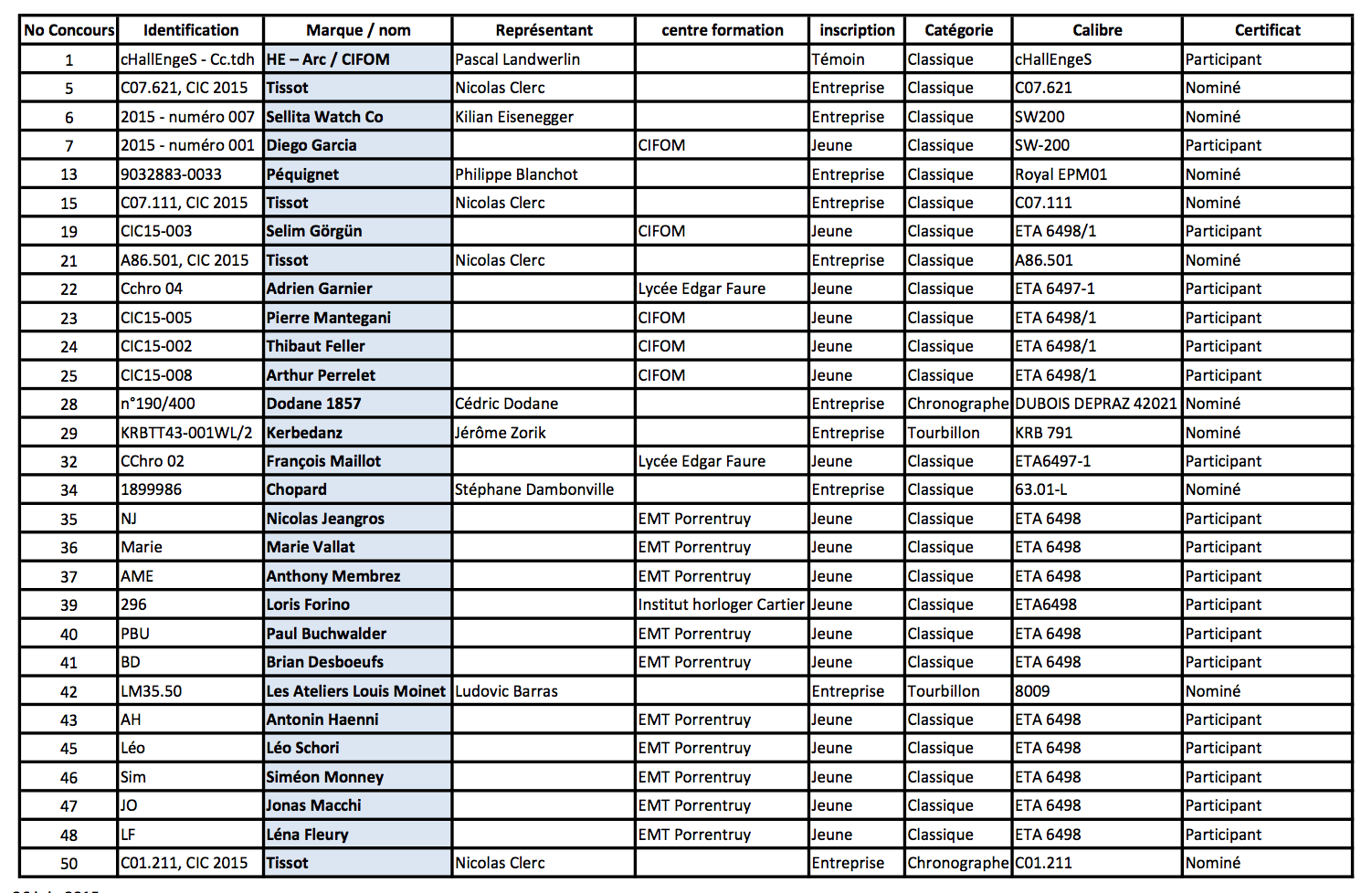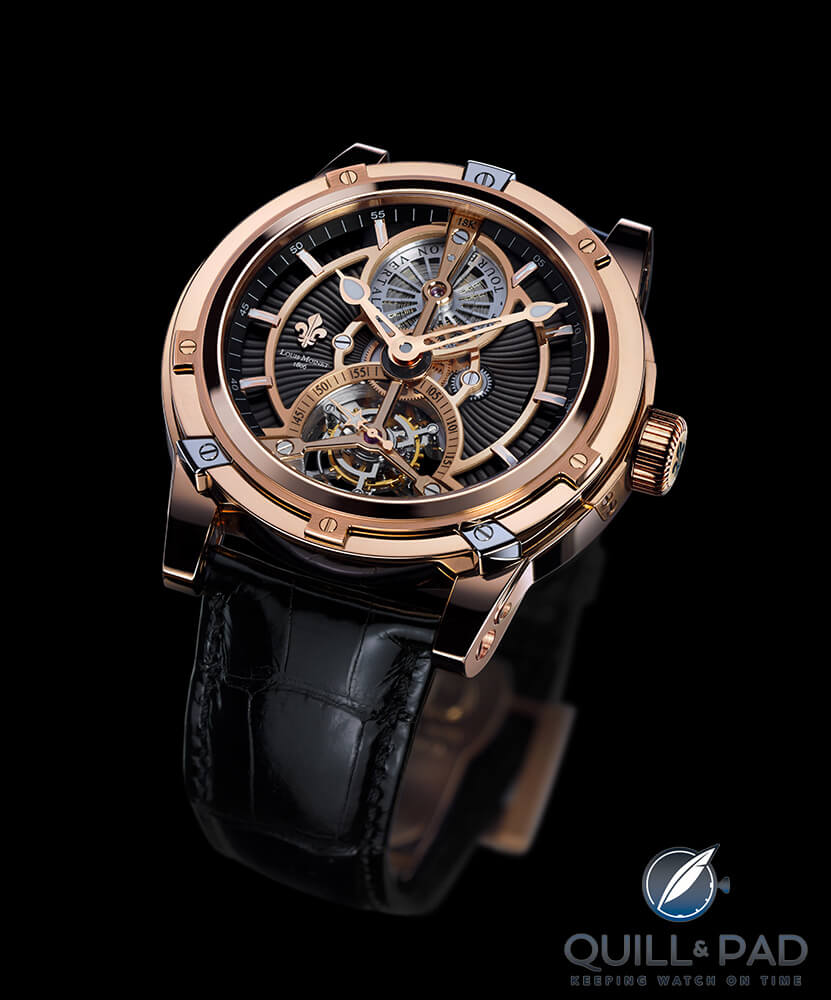2015 International Chronometry Competition Now Underway, But Does Anyone Care?
by Ian Skellern
International timing competitions used to be the Formula 1 of watchmaking, and the watchmakers who prepared the high-precision (pocket) watches were treated like Formula 1 drivers.
And that shouldn’t be surprising because until recently, the primary raison d’être of a timepiece was to tell the time.
To tell THE time, not the approximate time. An error of 30 seconds per day isn’t much . . . until you miss your train by 10 seconds.
Just as car manufacturers now compete in Formula 1 for the kudos good results bring to production cars, so did watch brands compete in international chronometry competitions for the kudos good results brought to the watches that the public bought.
The black swan
Then, in the late 1960s, a “black swan” (something completely unexpected) came onto the scene in the form of quartz watches. These were much more precise than mechanical watches. Rather than compete and lose, or compete in a separate category, brands stopped entering timing competitions and these gradually faded away.
The Neuchâtel observatory held the last of the old-era international chronometry competitions in 1972.
The king is dead, long live the king
In the last few decades, high-end watchmaking has evolved from being about high-quality, high-precision timing instruments to becoming luxury objects that tell the time.
But a few people kept the flame of high precision alive. And in 2009, the watchmaking museum in Le Locle, Switzerland announced the launch of a new biennial timing competition to commemorate the museum’s fiftieth anniversary.
The original timing competitions were similar to Formula 1 in that the entries were purpose-built for the competition, the watches (movement, actually) were not suitable for everyday use.
The new timing competitions test fully cased wristwatches and subject them to shocks, magnetic fields, and temperature variations. Just as watches might encounter in the real world.
In 2011, Greubel Forsey won the competition with the Double Tourbillon Technique. It set a benchmark score that still has not been beaten: read The Greubel Forsey Double Tourbillon 30° Technique: What’s Friction Got To Do, Got To Do With It!? for the full story.
Good news or bad news first?
But the International Museum of Horology in Le Locle has had difficulty in attracting support and entries from major brands because:
- The brands are selling luxury and exclusivity, not timing instruments.
- Brands that do enter do not want to be seen as also-rans, so only the winners are announced. That’s like watching the start of a Formula 1 race, then seeing the podium celebration but nothing in between. Hardly riveting viewing.
- And the competition organizers are still feeling their way and modifying the competition as they learn and receive feedback.
So I can understand slow but steady growth in entries, but I’ve been expecting, hoping, and praying for the competition to take off; with three competitions done and dusted, the 2015 competition should normally be a humdinger.
But with a heavy heart, seeing the list of entries, it doesn’t look that way to me. In fact, it appears that unless something is radically changed to the 2017 competition − assuming that there is one in 2017 − the modern timing competitions risk fading away into irrelevance and disappearing like their predecessors.
Good news
The good news is that the 2015 international timing competition has begun with announcements for three categories: classic, chronograph, and tourbillon. And and two classes of entry: young watchmakers (jeune) and companies (enterprise).
Bad news (again)

All the entries for the 2015 international timing competition: how many brand names do you recognize?
While I tip my hat to the brands entered in this year’s timing competition, they stand out for two reasons:
There are precious few of them.
There are zero big watchmaking brands.

Type 21 by Dodane 1857 is entered in the chronograph category of the 2015 International Timing Competition
These brands, take a bow please:

The Louis Moinet Vertalor is entered in the tourbillon category of the 2015 International Timing Competition
Now if precious few watch brands advertised the precision of their watches, I could understand the low turnout. But, shamefully, many think nothing of spending a fortune advertising the precision of their watches, but are too “timid” to put them to the test.
Don’t stay tuned, you can switch off
I’d like to be able to say, “Stay tuned for updates.” But relax and put your feet up as there won’t be any updates.
The next thing you hear will be the results (winners only unless all those who entered agree) on October 22, 2015.
I know that this risks sounding old-fashioned, but I still think that the goal of searching for ever higher precision watches is a very worthy one in its own right. And I applaud those who are working to keep that flame alive.
But I’m finding it very hard to care about the competition in its present format. And looking at the lack of entries, and the complete absence of entries from big brands, it appears I’m not alone.
For more about the International Chronometry Competition (and a little rant), please see Why Accuracy Matters To Me, And Why It Should Matter To You Too.
And please check out www.concourschronometrie.org.
Trackbacks & Pingbacks
-
[…] Welcome back to our weekly series, Watching the Web, where we look a other watch sites, and recap our more popular articles. This week, we talk about timing competitions, the only Rolex to be known as Batman, and whether or not the phrase “in-house movement” really matters any more. From our own pages, we have a pair of dives watches and a tidy vintage-styled GMT that hit the top of the charts.Did you know that timing competitions still exist? Not, that is, events that are timed, but competitions to crown the most accurate watches and movements? Those used to be a major thing prior to the quartz crisis, and then things (almost necessarily) tailed off. They started back up a bit ago, but it is definitely a restrained race. Check out the full writeup on what’s going on at Quill & Pad. […]
Leave a Reply
Want to join the discussion?Feel free to contribute!



Thank you for the article. Objective and competitive accuracy is a small corner of horology and a small corner of watch journalism today, and this does make me a little sad.
It seems that there is a general acceptance that the “average” mechanical watch is as accurate as it needs to be, and existing seals and ratings are thresholds of acceptance rather than objective and comparable measures of achievement.
What is particularly peculiar is the extent to which today’s luxury watches are producing some fantastic models that feature as a novelty components designed for greater accuracy. The fusee and chain, remontoire, silicon escape wheels, double balance wheels with differentials, multi-axis tourbillons, etc etc. Yet they do not step forward and demonstrate quite how much more accurate. Granted JLC did a while back, and GF too – but for so many others, for all the inflation in terms of fanfare and msrp for watches that seek to push technical boundaries, why not take it one step further and actually measure it?! I guess there is a degree of opportunity in that ambiguity that lesser well executed models would prefer to capitalize on.